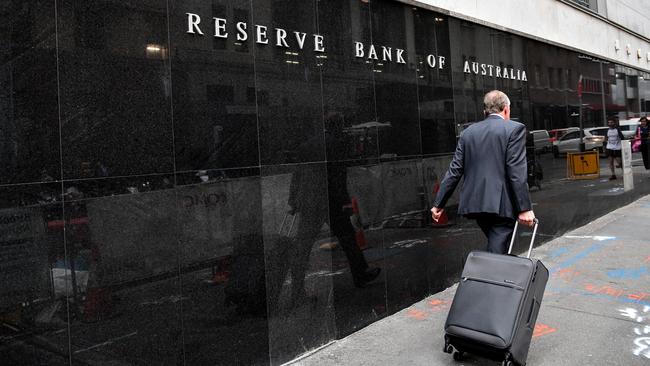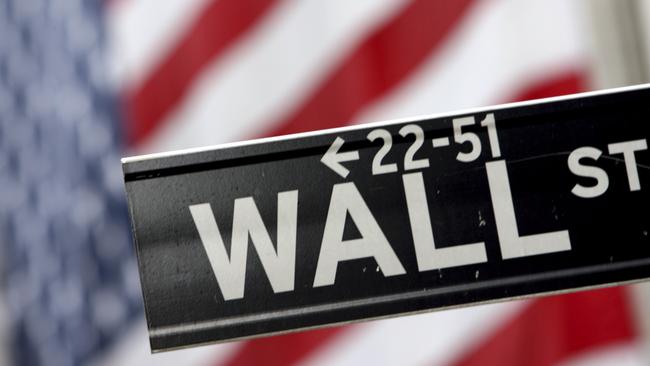Terry McCrann: Be alert, not alarmed ... just yet
Orange lights started flashing during the week. Some of them were more orange-red. Be alert but not yet alarmed, and be prepared to spend all of 2019 continually with that frame of mind, writes Terry McCrann.
Terry McCrann
Don't miss out on the headlines from Terry McCrann. Followed categories will be added to My News.
Be alert but not yet alarmed. And be prepared to spend all of 2019 continually with that frame of mind.
That’s at best.
It — and that word covers the full spectrum of your financial and economic wellbeing: your job, wage and salary increases, your super, the value of your property, your business conditions, if you own or run one, etc etc — is not going to get dramatically better soon.
And “it” could get worse.
Orange lights started flashing during the week. Some of them were more orange-red. The first, the property market, has been flashing for some time.
SLOW GROWTH, CREDIT SQUEEZE TO HIT IN 2019
RIVERS OF GOLD POURING INTO AUSTRALIA’S ECONOMY
As a general observation property prices have fallen perhaps about 10 per cent on average from their peak — a very high peak — in Melbourne and Sydney.
It’s more mixed and more complicated in the other capitals.
Further falls in 2019 are likely and this will aggravate an already dynamic negative feedback loop.
Property prices fall, that affects the economy on several fronts, the weaker economy then hits property prices.
How bad will the falls get? That depends on two things in particular — jobs and wages.
Right now, continued strong jobs growth is the brightest element in the economy. As long as it continues, you won’t get a real 1990-style meltdown in property.
But jobs are the ultimate lagging indicator. Jobs tend to dry up after the economy hits the wall; and the opposite tends to be the case on the upside.
Stronger wages growth could get us out of some of the property and debt-servicing difficulties. But we are not going to get that in 2019 — and even if we did it would probably trigger job losses.
Then add the emerging credit squeeze identified by the Reserve Bank in its decision to leave its official interest rate unchanged — perhaps, identified too subtly.

As I’ve been writing, we should beware of getting what we wish for. What we wished for out of the banking royal commission was banks not ripping off customers. What we have got immediately is four big banks petrified at lending to customers — property investors and, most importantly, small and medium business.
SMEs employ 75 per cent of people who work in the private sector. It’s tougher than it’s ever been to run a business.
If they can’t get credit, that does not bode well for jobs and wages.
That brings us to the biggest “alert but not yet alarmed” message — the GDP figures that showed the economy grew at just 0.3 per cent in the September quarter.
That’s an annualised rate of just 1.2 per cent. Putting it together with the much stronger June quarter gets you up to an economy growing at a 2.4 per cent rate. Over the year to the September quarter the total growth was 2.8 per cent.
All those numbers are lower — the main one, much lower — than the 3.5 per cent growth the RBA was forecasting just a month ago for the full 2018 year.
I always caution against reading too much into a single quarter GDP number. They are dodgy as. Except in this case, the broader context is not encouraging.
Clearly, the December quarter numbers are going to be absolutely critical — less about telling us what is happening right now, but what’s building for 2019.

Those figures don’t come out until early March. But the RBA — and indeed Treasury — is going to spend January very carefully analysing as best it can what is actually happening, real time, in the economy; and so therefore what it projects for 2019.
It will bring all this together in its forecasts, which are published early in February.
It will also tell us what this means for interest rates — and so, what it proposes to do about my “it”.
Then add what’s happening on the share market. Wall St took another hit overnight on Friday. It’s now dropped a thumping 1400-plus points in just three days.
The — slightly — good news is that in the previous week it had surged, so after the fall it was still actually — just — higher than it had been two weeks ago.
Why does Wall St matter so much to us?
First, because it drives all markets — nobody goes to bed at night wondering what’s going to happen on the German market (nor for that matter, what Chancellor Merkel might do politically).
But Wall St also both reflects what is happening with US interest rates and often affects those rates; and all that will drive global rates, global markets and the global economy.
Wall St is also reacting to what is or is not happening with the US-China trade war.
In all this it’s hard to find any good news.
But to repeat, it does not add up to impending and unavoidable doom.
Not yet. It bears very close watching.



